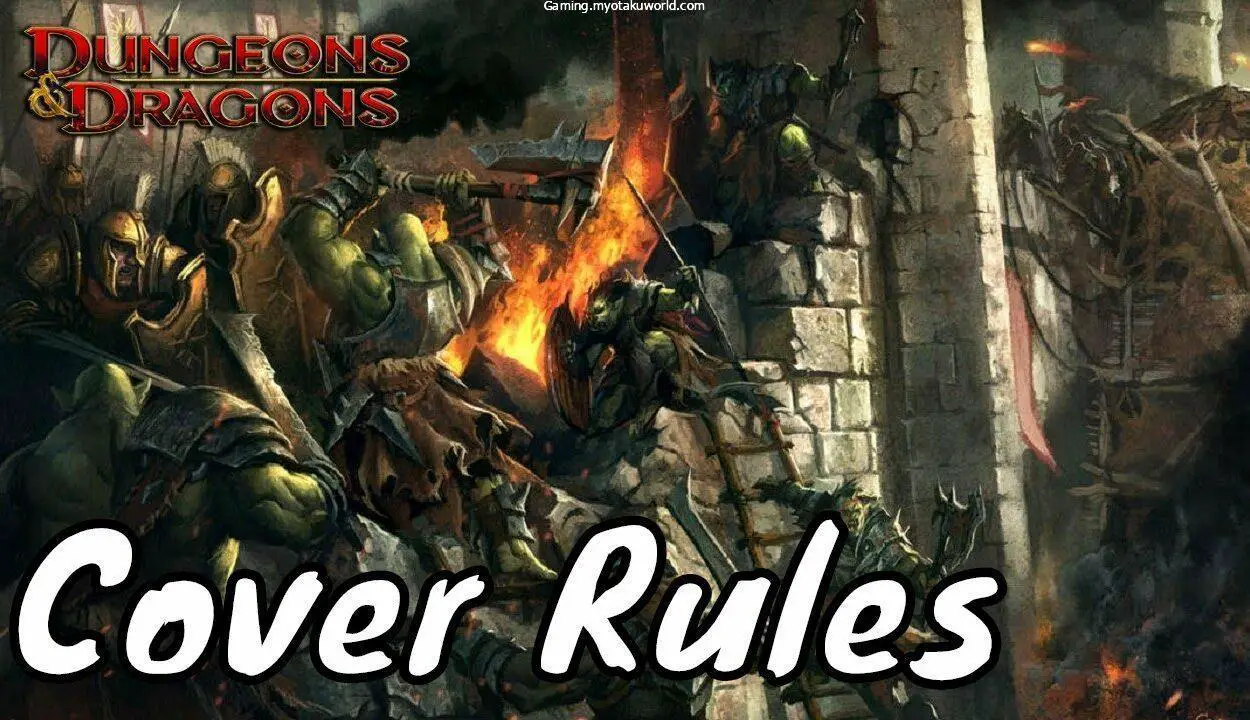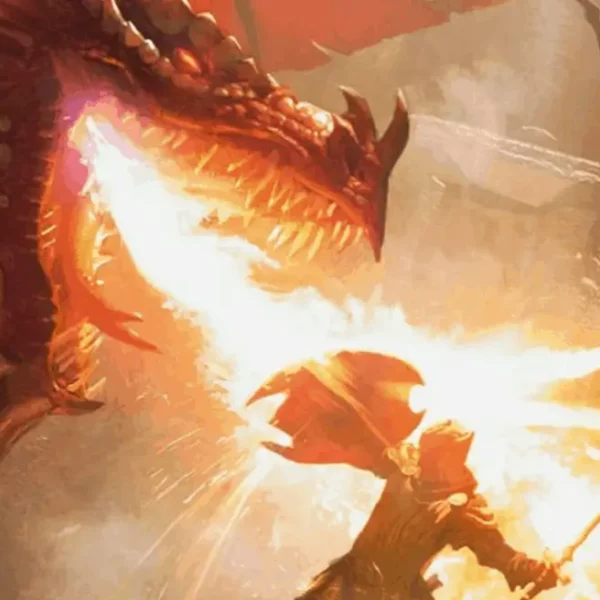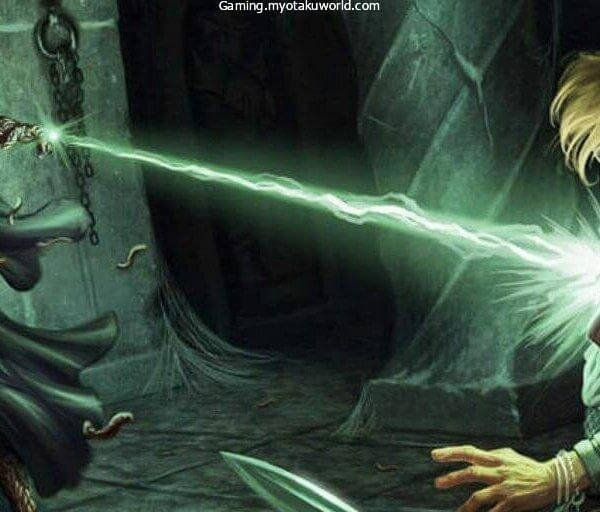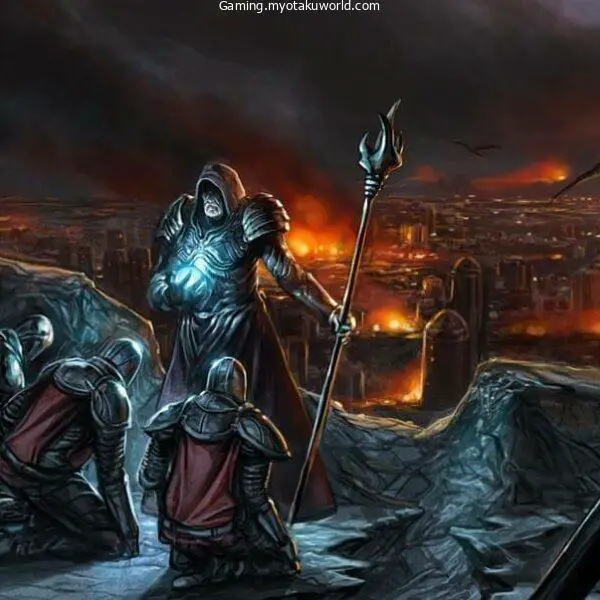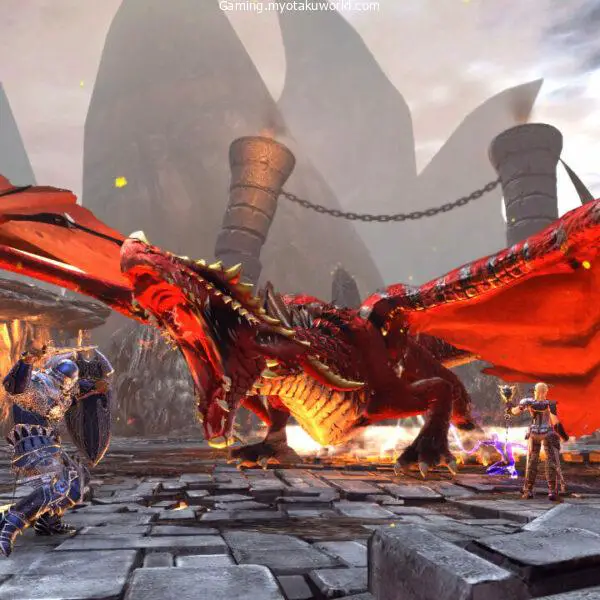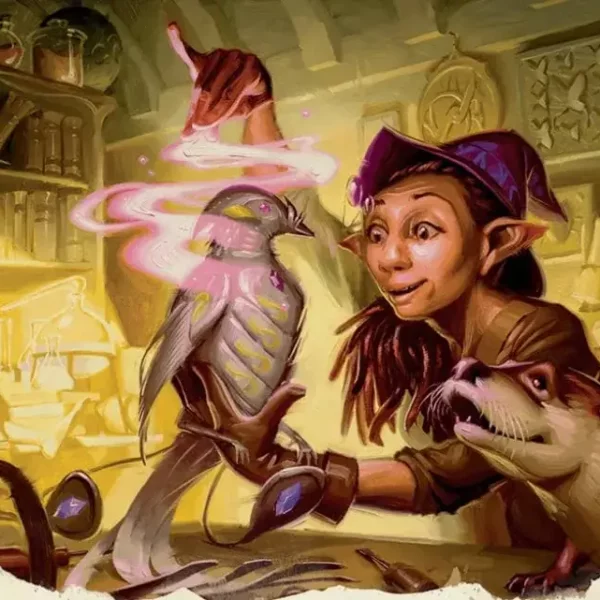Cover is a great set of rules in Dungeons & Dragons 5th Edition that adds a bit of tactical strategy to your fights.
Cover rules is helpful in 5e for both player characters and monsters controlled by the Game Master. So, if you know how it works, you have more ways to make fights more interesting.
This Cover in 5e guide tells new players and Game Masters everything they need to know to get started.
Let’s start with how D&D 5e’s Cover works.
How Cover Works in 5e?
The rules on the cover are a set of rules in D&D 5e that give creatures an advantage if they put something between them and their enemies. When you use cover in 5e, your fights feel more strategic.
The cover is a combat rule in 5e that gives your character or monsters a bonus to their armor class and dexterity saving throws.
This is a huge benefit and makes your fights more interesting because creatures will try to outmanoeuvre each other to get these bonuses.
On page 196 of the Player’s Handbook, it says this about the cover:
“Walls, trees, creatures, and other obstacles can provide cover during combat, making a target more difficult to harm. A target can benefit from cover only when an attack or other effect originates on the opposite side of the cover.”
So, Cover helps your character if he or she is standing behind something.
So, for the cover to help, an attack, spell, or other effect must come from the other side of the cover.
This means that if you have half cover from a low wall but an enemy shoots an arrow at you from your side of the wall, you won’t get the benefits of cover for that attack.
Cover has three levels in 5e: Half, Three-Quarters, and Total. This leads to the next point.
Types of Cover in D&D 5e

Half Cover, Three-Quarter Cover, and Total Cover are the three levels of Cover in D&D 5e. Each level of Cover gives a creature something different.
There is technically a fourth level, but it’s not covered. But since that isn’t a state and doesn’t give any perks, we won’t talk about it.
Now, half cover and three-quarters cover are pretty much the same. The difference between the two is that the second one gives a better bonus than the first one.
Total Cover is a unique state that isn’t always better than Three-Quarters because it gives a different benefit.
Remember that a creature only benefits from the highest, most protective level of cover that is available.
So, if a creature stands behind a low wall that gives Half Cover and a wall that gives Three-Quarters Cover, that creature would only get the benefit of Three-Quarters Cover. The good things about Cover don’t add up.
So, let’s get straight to it and talk about the three levels of Cover in D&D 5e.
Half Cover
In 5e, Half Cover adds +2 to a creature’s Armor Class and Dexterity saving throws.
Half Cover is given by obstacles that hide at least half of a creature from at least one side. Low walls, trees, or other creatures are all examples of things that give Half Cover.
Three-Quarters Cover
In 5e, a creature’s armour class and dexterity save to get a +5 bonus from three-quarters cover.
Three-Quarters Cover comes from obstacles that block most of a creature from one side. “Three-quarters” might be a bit misleading, since one of the examples is arrow slits, which cover more than 3/4 of a creature from the outside.
You’ll have Three-Quarters Cover as long as at least three-quarters of your character is blocked and you’re not behind Total Cover.
Three-Quarters Cover can be given by things like a wide tree, a wall with an arrow slit, or a creature that is at least one size bigger than you.
Total Cover
With Total Cover, a creature can’t see anything at all. Most attacks and spells can’t hit a creature behind Total Cover because the person making the attack or casting the spell can’t see it.
Total Cover in 5e is different from the other levels of cover because it doesn’t give an armour class or dexterity save bonus.
Instead, it gives the benefit of completely blocking the line of sight, making it harder to see a target that has this level of Cover.
This is what the Player’s Handbook says on page 204:
“To target something, you must have a clear path to it, so it can’t be behind total cover. If you place an area of effect at a point that you can’t see and an obstruction, such as a wall, is between you and that point, the point of origin comes into being on the near side of that obstruction.”
Total Cover means that a creature can hide behind a completely solid object so that no part of its body can be seen.
Most attacks, abilities, and spells need a clear path to their target, so creatures behind Total Cover can’t be the target of these things.
Still, some spells and skills can affect creatures even when they are behind Total Cover. For example, “The fire spreads around corners” is written right on the fireball spell.
So, even if a creature has Total Cover from your character’s point of view, the spell’s effects will still hit it as long as it’s in the spell’s radius.
How to Get Cover in 5e?

When a creature moves to the other side of a physical barrier, it gets a certain amount of Cover.
In 5e, it’s pretty simple to get cover. All you have to do is move your character or creature to the other side of a physical object. What that thing depends on depends on where you are and what you are doing.
Obstacles
Most of the time, you can get Cover in 5e by moving behind something solid. You can hide behind walls, trees, and rocks, among other things.
When you think of Cover, you might picture your character leaning against a wall with a loaded crossbow at the ready or turning a table over and ducking behind it to avoid arrows. And, to be honest? That’s about how things go.
If you put a big enough object between your character and an enemy, you might get cover. But it has to be big enough to be eligible. The cover won’t work with a standard-sized mop bucket.
Now, a dragon’s mop bucket from long ago? That might help you in some way.
Other Creatures
Other creatures, both friends and foes, can also give you cover.
Now, should you try to put your friends between your character and the dragon? Possibly. It depends on how good of a friend you are.
It makes sense that being behind another creature gives you Cover. Being physical objects, creatures can block attacks coming from behind them by blocking the line of sight.
But you can play around with an optional rule that puts creatures that are acting as Cover in danger.
Hitting Cover in D&D
On page 272 of the Dungeon Master’s Guide, there is an optional rule for attacking Cover if you miss your target.
The basic idea behind the rule is that if a creature misses an attack roll against a target behind cover but that attack would have hit if the target wasn’t behind cover, then the attack hits the object that covers the target.
Maybe it would help to give an example.
Say your character is going after a raging owlbear that is hiding behind a tree and has a base AC of 13. The owlbear can get half cover from the tree, which gives it a +2 to its AC for a total of 15. You attack with a total of 14 on the dice.
Now, you miss the owlbear because it has been Covered. If it didn’t have a Cover, you would have hit it. If you did this, you would hit the tree instead.
Now, there are rules for destroying things in D&D 5e. When you attack an object, you roll normally and try to meet the object’s AC, which is a rough measure of how hard it is to hurt that object. For example, because a boulder is so hard, it has a higher AC.
Objects also have a damage threshold, which is the amount of damage that must be done to the object before it is hurt. If you don’t roll enough damage, the attack doesn’t do much damage and doesn’t count against the target’s Hit Points.
So, if you miss a creature hiding behind cover, you could check to see if you hit the AC of the object providing cover, roll damage normally, and see if you meet or exceed its damage threshold.
The same is true for creatures that give another creature Cover. If you miss the target’s AC but hit the score of the creature covering it, you hit the creature covering it.
Now, this rule is not a must. So, don’t feel bad about leaving it out of your game if it’s too hard to understand.
Still, it can add a lot of fun and make combat more interesting as Covering obstacles slowly fall apart during the fight.
FAQs
Does Cover Give Advantage in 5e?
The cover doesn’t grant an advantage in 5e on its own. The Unseen Attacker rules on page 195 of the Player’s Handbook or here on DnD Beyond’s Basic Rules would give you an advantage if you took the Hide action while hiding behind something, as long as you count as your target losing sight of you.
What Does Cover Do To AC in 5e?
Cover in 5e adds +2 or +5 to a creature’s Armor Class (AC), depending on whether it’s behind Half Cover or Three-Quarters Cover. Total Cover doesn’t change your AC. Instead, it stops other creatures from being able to attack you.
How Does Cover Affect Saving Throws?
Cover only affects saves based on dexterity. Depending on how many covers you have, you get a bonus to your savings: +2 for Half Cover and +5 for Three-Quarters Cover.
Summary
About everything you need to know about Cover in 5e is in that sentence.
The rules for the cover are a set of rules that tell creatures that enemies on the other side of an obstacle give them a bonus to their armour class.
There are three levels of Cover that can be given by an obstacle: Half, Three-Quarters, and Total. And obstacles can be almost anything, like walls, trees, or even other living things.
Now, if you’re running a game or planning to run one, I recommend putting in obstacles that creatures can use as cover when fighting.
The jockeying for better positions keeps fights from getting boring and keeps them from turning into a long slog.
